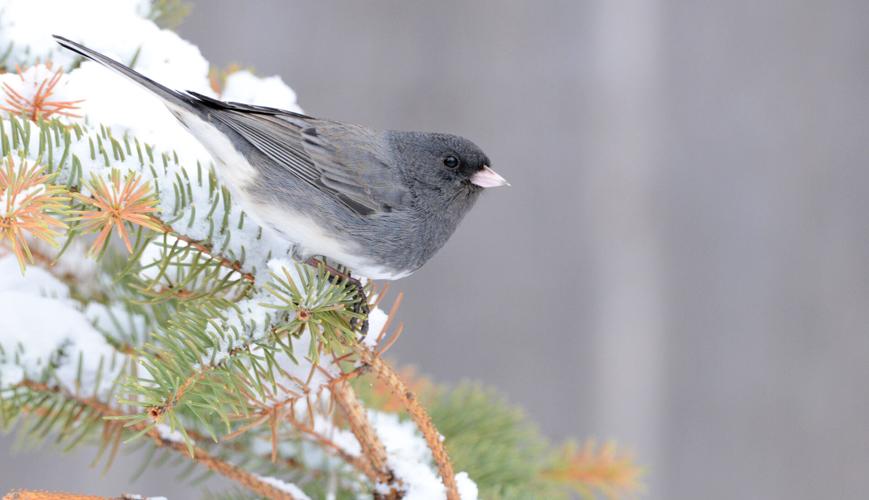Christmas eve, 2012, I was sitting 15 feet above a forest floor, bow in hand, waiting for whitetail deer to follow the well-used trail that wound its way only 10 yards from my stand.
As is always the case, other wildlife kept me entertained while I watched for deer movement. The woods were buzzing with bird life, mostly northern cardinals who sang and flitted in the thickets adjacent to my stand.
The birds deserved attention, but a feeding eastern grey squirrel captured my eye. The little mammal showed no fear as he frolicked on branches, sometimes only a few feet from my perch. At one point the curious animal clawed his way up the tree trunk and paused where the strap secured my stand to the tree. After locking eyes with the squirrel, he scampered down to the forest floor and disappeared into a ravine, the dry leaves crunching in the morning stillness under his feet.
When he returned, his mouth was not stuffed with oak nuts, but with a mass of oak leaves that he toted up a tree to a lofty height where he added them to a leafy nest.
Up to this point in the season, it had been unusually warm and dry, and the squirrel’s behavior had me thinking the snowless, precipitation-free winter might just continue. After all, by the time December rolls around, southern Minnesota squirrel species have all relocated from leafy abodes to hollow tree homes, away from winter’s bitter winds and sub-zero temperatures.
Perhaps, I wondered, squirrels remaining in leafy nests may be a natural harbinger of a mild winter. As it turns out, that winter was tropical by Minnesota standards.
Admittedly, I love hunting deer in snow, but lounging in a sun-drenched tree stand is awfully comfortable and makes longs stays easy. That morning was ideal, both in terms of non-game wildlife observed and deer seen. Only an hour after climbing aboard the stand, a stout doe eased down the trail, and after a good shot and a short trail, capped my freezer with delicious, lean venison. The perfect beginning to a warm winter.
This fall, apart from a brief October cold slam replete with several snowfalls, has been eerily mild. The last number of days have all been sunny without the incessant north winds and slate grey overcasts that are so common in winter. Many outdoors-oriented folks are looking somewhat anxiously over their shoulders for a front that will turn these idyllic days frozen and fill yards and fields with snow.
So far, it does not appear like that will happen soon.
Although, I’m fond of hunting in snow, I wouldn’t be upset if this current mild streak continued right on until spring.
If other wildlife are any indication, southern Minnesota might experience an easy winter. Birds who normally wing south much earlier have been seen recently, and other birds, like dark-eyed juncos, have not descended on the Kato area in big numbers yet from their northern summering grounds.
只是一个星期前,在打鸭子ice-rimmedlake, I watched a pair of kingfishers, who should have been long departed, diving into the icy water over and over, constantly chattering while they fished. The duo stayed so close to the boat, perching in perfect light only feet away, that I cursed myself for not bring a telephoto lens to record the birds as they braved late November water.
A week previous to that, while duck hunting a mostly iced over pond amid sub-20 degree weather, I was surprised to see a plethora of shorebirds skipping across the ice to reach the shallow, open water section to bob for crustaceans. Among the birds present were sandpipers, a lone greater yellowlegs, and a par of noisy killdeer.
太专注于喂养,gunfire and dropping ducks didn’t scare them off a feeding mission that would sustain them on their long flights to Florida and beyond.
Witnessing a flock of summer birds, who are some of the earliest migrators, feeding that late in Minnesota waters caused me to guess that warmer weather wasn’t far behind. Once again, the animals’ unusual behavior bore that out. It has been mild ever since.
Are animal actions surefire indicators of incoming weather?
In the short term, I’d say yes as animals react habitually to changing weather. Just like the Farmer’s Almanac, animal behavior probably can’t be trusted to accurately forecast long-range weather patterns.
I’ve been pondering a duck hunt in a southern state, and despite what the animal forecasters have been showing, you can bet squirrels will be gathering nuts and moving inside trees as a genuine Minnesota arctic blast follows me south.
Mark Morrison is an avid hunter and fisherman who has been a freelance outdoors writer and photographer for more than 20 years. The Mankato resident since 1979 may be contacted atmercuryphotog@aol.com.
































Commented
Sorry, there are no recent results for popular commented articles.